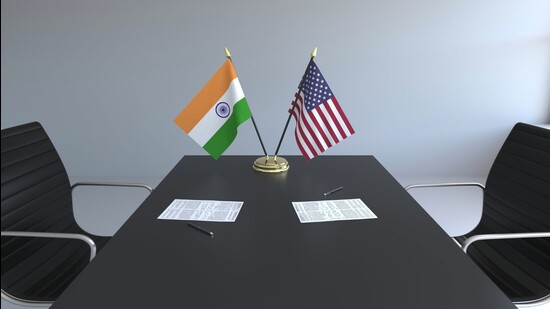India and US must build a high-trust ecosystem
If we are not ready to put our talent and economic weight toward free enterprise and free people, the rules of the 21st century economy will be written by regimes inimical to both
At 75, India is a rising economic power and an aspirational society with a bright future. Prime Minister Narendra Modi outlined this positive vision for India during his Independence Day speech. By its 100th anniversary of Independence (2047), India could stand transformed, a colossus of ancient wisdom and a high-tech developed economy. As India rises, so can its commercial ties with the United States (US), towards our shared goal of $500 billion in annual trade. We can achieve this goal if we view each other as economic partners and members of the same high-trust ecosystem.

The US and other free societies have a vested interest in India’s rise. India’s growing economic weight supports the case for democratic values, a rules-based international order, and development led by a system of free enterprise in the Indo-Pacific and the world at large. By working with the US and other like-minded partners, India can maximise its ‘techade’ and build a high-trust ecosystem to facilitate mutual growth and set the right rules for an increasingly digitised 21st century economy. By doing so, India can shape the next phase of Indo-Pacific development and expand the sectors that will pave its way to developed nation status by 2047.
A cornerstone of such a high-trust ecosystem would be a secure data corridor that establishes protocols for cross-border data flows, which balance the interests of consumer privacy, national security, and economic growth. As digital powerhouses, the US and India should enable industry, academia, and civil society to move data freely, with efficient regulatory oversight such as the regime being developed by the Asia Pacific Economic Cooperation. India’s participation in the Budapest Convention — even as an observer — will enhance the regulatory ties necessary to efficiently govern digital markets in a global context.
A promising first step would be for both sides to leverage Quad to create a Memorandum of Understanding that outlines Common Principles on Data Governance, and then use that to facilitate a US-India CLOUDAct Agreement, supporting India’s global leadership and full participation as part of the next phase of the Budapest Convention.
Another key pillar of a high-trust ecosystem is mutual recognition of standards, certification, and testing. The US and India both have high standard certification procedures for equipment testing and Commercial Off-The-Shelf (COTS) products. Currently, retesting approved American goods in India increases the costs of doing business. A Mutual Recognition Agreement between the US and India that covers areas such as commercial electronics would allow us to reduce and distribute regulatory costs across our economies and accelerate how quickly products made by American and Indian manufacturers penetrate the market.
America’s national security apparatus is strengthened by technologies developed by Indian companies and other allies. Likewise, India could benefit from cutting-edge technical capabilities developed by American firms, and managed by Indian nationals with appropriate security clearances. Together, the US and India should forge a trusted defence tech ecosystem and expand it to future-focused sectors such as Artificial Intelligence, space technologies, and quantum research.
Equally important is to fortify cybersecurity defences through greater knowledge-sharing across government and industry. A US-India Chief Information Security Officer (CISO) Forum could give governments a better understanding of this highly technical space and allow CISOs to engage closely with policymakers. Taking such steps will ensure that democracies such as ours retain the edge as strategic competition in the region escalates and enemies of human freedom abound.
Additionally, as the US faces a talent shortage in its strategic sectors and economy at large, it is in its national interest to open more doors for Indian students and workers. The US can make progress through solutions such as an e-visa agreement that could facilitate investors, entrepreneurs, and small traders to come and work in the US, followed by further reforms to its visa system. Indian talent makes the US economy stronger, and many invest in the rise of their mother country through greater skills, resources, and entrepreneurial spirit.
India’s full participation in the Indo-Pacific Economic Framework (IPEF) is also key to building a high-trust ecosystem with partners in the region. Critics claim the IPEF is an amorphous body that lacks the market access incentives to expand commercial ties among its members. Such criticism ignores the fact that IPEF has much potential for growth. By participating in IPEF, India and America and like-minded partners can shape a trade and technology convergence that mirrors what our companies are already doing. From tiny acorns such as IPEF, mighty oak trees of prosperity can grow.
At 100 years of bilateral relations, the world would benefit from seeing the US-India partnership stand proudly as one between high-trust partners, who serve as anchors of democracy and stability in their respective hemispheres. If we are not ready to trust each other, and to put our combined talent and economic weight toward free enterprise and free people, the rules of the 21st century economy will be written by regimes inimical to both. It is time for both our governments to be ambitious, reflecting the reality of high-trust convergence already taking place across the private sector.
Ambassador (retired) Atul Keshap is president, US-India Business CouncilThe views expressed are personal
All Access.
One Subscription.
Get 360° coverage—from daily headlines
to 100 year archives.



HT App & Website






